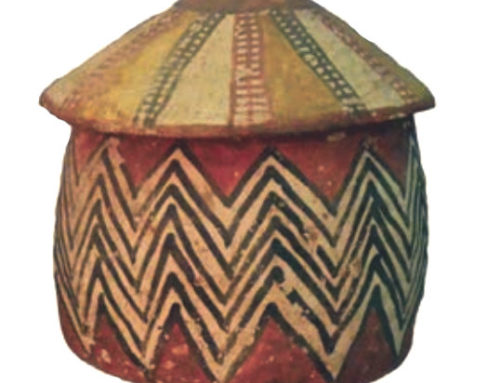
An early image of the Gifts of the Magi, following the star and bringing presents to Jesus, from a 3rd century catacomb in Rome.
Today’s January 6th, which makes it twelve days since Christmas (and back to school for a lot of people!). That’s Twelfth Night, as in the Twelve Days of Christmas, and in some times and places, Twelfth Night was the bigger holiday, when the Three Wise Men are supposed to have showed up with their presents for baby Jesus.
Life of Jesus
The historical Jesus
History of Christmas
Christmas in medieval Europe
In some places and times, you got your Christmas presents on January 6th, the same time as baby Jesus did. In France today, people celebrate Twelfth Night with King cakes, a puff pastry with almond paste inside and a bean hidden in one of the pieces. Whoever gets the bean is King for a day.
Where do almonds come from?

The Three Wise men again, on a mosaic from Ravenna from the 400s AD
But this year brings us a different take on the Wise Men: an exhibit at the Getty Museum asking why European artists started to show one of the Wise Men as a black man in the late 1400s AD. As the Getty’s curators point out, this marks a shift in European thinking, and it has to do with slavery, as my last blog post did too.
Slavery and medieval Europe
In Roman art, and in Early Medieval art, and through most of the Middle Ages actually, the Three Wise men were easterners. They wear the patterned leggings and red hats that European artists used to let viewers know that a character came from Iraq or Iran or Central Asia. They were kings, or wise men, or whatever, coming from a place that was richer and more powerful, to see the baby Jesus, who was more powerful than them, even though he was poor and born in a stable.

Greek image of a Persian woman (ca. 450 BC)
That’s the early story: the contrast between the poor Christian baby and the rich Eastern foreigners who still recognize his importance and follow the star to bring him gifts.
But in the middle of the 1400s, the concept changes. Europeans no longer thought of themselves as the poor ones, and West Asia as the rich ones. Europe was getting stronger, and they wanted to think of themselves as the strong, rich characters in this story. Now the Three Wise Men come from all parts of the world to bring presents to powerful Christ the Lord, like colonized people paying tribute to Europe. It’s at this point that one of the Wise Men becomes a black man, representing sub-Saharan Africa.

This is often used to show that medieval Europe was not so white that there were no black people there; they knew what African people looked like. And yes, absolutely, there for sure were black people in medieval Europe, in all different social positions.
Medieval West Africa

Mansa Musa of Mali, on a map from Sicily drawn by an Islamic North African
But I don’t think we can take these images as just including African kings in with the earlier Iraq-and-Iran kings to show how poor baby Jesus is still respected by the rich and powerful. Instead, there’s a paradigm shift – a change in how European artists thought about the Wise Men – that makes Christians the powerful ones, and non-Christians representing all the corners of the world the ones who come to bring valuable stuff to him/to Christians/to Europeans.

Caravels, about 1500 AD (Livro das Fortalezas de Duarte Damas)
By this time, in the middle of the 1400s, Europeans were already figuring out how to sail to Africa and seize people there to bring home and enslave on sugar plantations in the Canary Islands, Cyprus, and southern Spain.
Sugar in the Islamic World
History of Slavery
Sugar and Slavery
Colonization timeline
These images reflect a new ambition for Europe to dominate the world in the name of Christ – enslaving Africans, selling sugar and paper to West Asia, and dominating Indian Ocean trade. I’m not alone in thinking this: there’s a great exhibit about it right now at the Getty Museum in Malibu:
If you’re in Southern California, you should go see it! But if not, at least you know a little bit about what they’re saying. Happy Twelfth Night, and let’s look forward to a world where there are no kings and no rulers, no slavery, no colonialism, and no racism.




